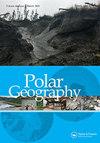阿拉斯加儿童在变化的北极环境中对环境管理的看法
IF 1.6
Q3 GEOGRAPHY, PHYSICAL
引用次数: 0
摘要
本章放大了阿拉斯加儿童在考虑北极可持续发展教育方面的声音。这项合作研究探索了阿拉斯加三个不同地区的儿童如何理解和实施环境管理:阿拉斯加内陆、基奈半岛和阿拉斯加西南部的一个农村土著村庄。为了纪念儿童机构,这项研究采用了以儿童为中心的研究方法,包括儿童的绘画和描述、角色扮演、课堂讨论和使用可穿戴相机的视频游览。调查结果揭示了环境管理的共同主题,但儿童感知和实施管理的方式因社会、文化和地理背景而异。对于来自基奈和阿拉斯加西南部村庄的孩子们来说,清理垃圾被认为是当务之急,但阿拉斯加内陆的孩子们却很少提到这一点。阿拉斯加内陆的孩子们强调照顾宠物,而来自基奈和阿拉斯加西南部村庄的孩子们则讨论了与狩猎和捕鱼伦理有关的动物照顾。对植物的照料不如对雪的照料那么普遍。儿童的空间自主性、归属感和与地方的个人联系,在发展在土地上更可持续地生活的能力方面发挥着重要作用。调查结果指出,应采取情境化和以儿童为中心的办法,促进儿童机构在其环境中为其环境采取行动。本文章由计算机程序翻译,如有差异,请以英文原文为准。
Alaskan children’s perspectives of environmental stewardship in a changing Arctic environment
ABSTRACT This chapter magnifies the voices of Alaskan children in considering education for sustainability in the Arctic. The collaborative research explored how children understood and enacted environmental stewardship in three distinct Alaskan locations: Interior Alaska, the Kenai peninsula, and a rural southwest Alaska Native village. Honoring children’s agency, the study involved child-centered research methods, including children’s drawings and descriptions, role-playing, class discussions, and video tours utilizing wearable cameras. Findings revealed common themes of environmental stewardship, yet the way children perceived and enacted stewardship varied according to the social, cultural, and geographical contexts. Cleaning up litter was perceived as immediate and important for children from Kenai and the southwest Alaskan village, yet it was scarcely mentioned by Interior Alaskan children. Interior Alaskan children emphasized pet care, while children from Kenai and the southwest Alaskan village discussed animal care in relation to hunting and fishing ethics. Care for plants was less common than care for snow. Children’s spatial autonomy, sense of belonging and personal connection with place, plays an important role in the development of competencies to live more sustainably on the land. Findings point towards contextualized and child-centered approaches to promote children’s agency to act in and for their environments.
求助全文
通过发布文献求助,成功后即可免费获取论文全文。
去求助
来源期刊

Polar Geography
GEOGRAPHY, PHYSICAL-
CiteScore
5.30
自引率
0.00%
发文量
13
期刊介绍:
Polar Geographyis a quarterly publication that offers a venue for scholarly research on the physical and human aspects of the Polar Regions. The journal seeks to address the component interplay of the natural systems, the complex historical, political, economic, cultural, diplomatic, and security issues, and the interchange amongst them. As such, the journal welcomes comparative approaches, critical scholarship, and alternative and disparate perspectives from around the globe. The journal offers scientists a venue for publishing longer papers such as might result from distillation of a thesis, or review papers that place in global context results from coordinated national and international efforts currently underway in both Polar Regions.
 求助内容:
求助内容: 应助结果提醒方式:
应助结果提醒方式:


